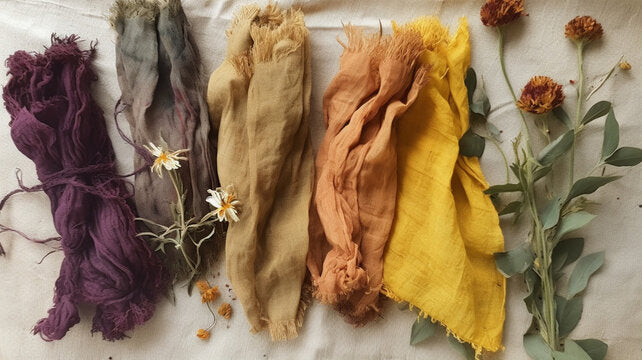10 Things You Didn't Know About Jewelry Majors

With school back in full swing, we want to give you a look into the AUArts studios, starting with our Jewelry + Metals department! This month we interviewed Show + Sale artist Lindsey Ranks (she/her) to find out what makes our J+M department so special.
Lindsey fell in love with J+M in her first year after taking a jewelry elective course with instructor Joan Irving. She enjoyed how open the class was to beginners and liked getting hands on with the material. Since majoring, Lindsey has specialized in immortalizing found objects in silver, such as old coins or moss and branches she picks up on her hikes. She is passionate about sharing her tips and tricks with other students and is eager to give you an inside look at the Jewelry + Metals department.
Did You Know? Jewelry + Metals Edition
1. Jewelry + Metals majors adore shiny things!
Ok, this one is pretty obvious. Our department is full of magpies like me; people who love collecting things and fawning over sparkly objects. Gemstones, scrap metal, coins, even weird things I find on hikes fill my studio. As jewelers we’re surrounded by shiny objects every day but we just can’t seem to get enough.

Oooooooooohhhhh shiny! Image credit: Lindsey Ranks
2. We always work with high quality metals for our jewelry.
Our instructors teach us to use pure metals for their superior quality and to be sensitive to consumer allergies. Brass, copper, and nickel are your bread and butter during first year so you can learn the basics. Once you get more confident you can work with silver and gold. Not only are pure metals better for those with metal allergies but they are also more sustainable for the environment. As craft artists, we know that quality comes first.

Working with pure metal can get expensive so we encourage students to put cutoffs in the scrap bin so we can reuse them. Image credit: Leia Guo.
3. Buying a handmade jewelry piece? We mean that. Literally.
While we do have access to power tools in our studios, many techniques are still done by hand such as soldering, hammering, cutting, and filing. It gets a little tedious after a while but it’s also highly satisfying to know that you made everything from scratch yourself. Unlike factory manufactured jewelry, every piece we make is bespoke and you can see the artists’ touch.

To cast this pinecone in silver I made several different molds and poured the silver in myself. Image credit: Lindsey Ranks.
4. We have a not-so-secret department celebrity!
Charles Lewton-Brain is a previous instructor that that taught in the J+M department for many years. He also just happens to be the inventor of the metalworking technique “fold-forming” and is an internationally renowned celebrity in the craft world! Did you know he was even in an episode of “The Curse of Oak Island”??? While I didn’t have the pleasure of being in his classes when he was teaching here, he’s a regular poster in the AUArts Jewelry + Metals Facebook group. Charles is definitely something of a legend to us in the department and someone we are so proud to have connections with. Go Charles!

Charles Lewton-Brain teaching a class in the AUArts studios. Image credit: Wayne Norman
5. You end up breaking a LOT of jewelry saw blades.
Jewelry saws are similar to small jacksaws and are used to cut metals with precision. After transferring your design and clamping down your piece you carefully work the jewelry saw up and down in a sawing motion to cut through the material. By hand. They’re a must-have tool but they can also be very temperamental! Getting the tension right can be tricky and if you push the saw too hard you’ll end up breaking your blade. Sometimes you’ll have bad days and you through your entire stash of blades in a few hours. Oops!

A jewelry saw with extra blades. Image credit: Leia Guo.
6. We have a pounding room. Filled with stumps.
Our pounding room is definitely one of the most unique spaces in AUArts. The room has a collection of old stumps that we use to help us shape metal. When you’re hammering metal, you don’t want to work on an anvil since it’ll scratch your piece. Instead, you take it to the stumps. Not only is wood a soft but sturdy material to hammer on, you can sometimes find an indent with the perfect angle to hammer your piece into the shape you want. During finals you can hear the hammering across the campus.

These stumps are well loved by the J+M department. Image credit: Leia Guo.
7. Polishing a piece can take hours to get right.
While polishing is the last stage of making a jewelry piece, it’s also one of the most time consuming. You could send your piece into the polishing tumbler but then you risk scratches and contamination if the previous user didn’t clean it well. If you want a good polish you do it by hand. I’ve spent up to 3 hours filing and sanding a single piece just to get it ready for a critique!

Even the smallest scuffs need to get polished out before a piece is critique ready. Image credit: Leia Guo.
8. All jewelry majors need their own Foredom drill.
While the majority of our work is done completely by hand, we do have our trusty Foredom tool! A Foredom is foot-powered rotary tool and comes with a variety of accessories to help us file, polish, drill, and more. It’s similar to an extra large Dremel. It’s a must-have tool for J+M majors since the communal studio Foredoms are used by the first and second years. Foredoms are pricey to get but they’ll last years if you treat them right. All the majors are pretty protective of their Foredoms, and for good reason.

Foredom drills in one of our communal studios. Image credit: Leia Guo.
9. Jewelry + Metals majors are stubborn as heck.
As you probably have guessed from our facts so far, being a J+M major is a lot of work! Not only do we learn to develop an eye for detail from our instructors so we see every tiny little scratch on our piece, but we are very stubborn. I’ll burn the midnight oil tweaking a tiny solder joint to get it just right because it looks funny. Making jewelry takes a lot of patience and perseverance, and maybe even a little bit of masochism.
@lindseyranks precious metal Clay demo
♬ Background Country - BrunoFreitas
Even during Covid-19 I found cool ways of making jewelry at home without studio access, including using precious metal clay. Video credit: Lindsey Ranks.
10. In our department, we always pay it forward.
Jewelry can be hard, tedious, and frustrating. That’s why J+M majors make a habit of helping other students whenever we can. You’ll often see a major helping a first year with their filing or ideating with each other in our home studios. Our community is small and tight knit so we know the value of collaboration. Though most of us work solo, we have each other’s backs and love sharing our knowledge with anyone who wants to learn!

Two J+M majors having fun at Show + Sale 2019. Image credit: Leia Guo.

Lindsey Ranks (Broken Antler Designs) is a 5th year Jewelry + Metals major that specializes in immortalizing found natural objects in cast silver jewelry. Each piece is completely unique, like how it exists in the natural world. Because each piece she makes is from an actual piece of foliage, they all tell their own stories through the grooves and textures presented in silver. Each piece is personal and special to the wearer.
Instagram Account: @brokenantlerdesigns












Leave a comment